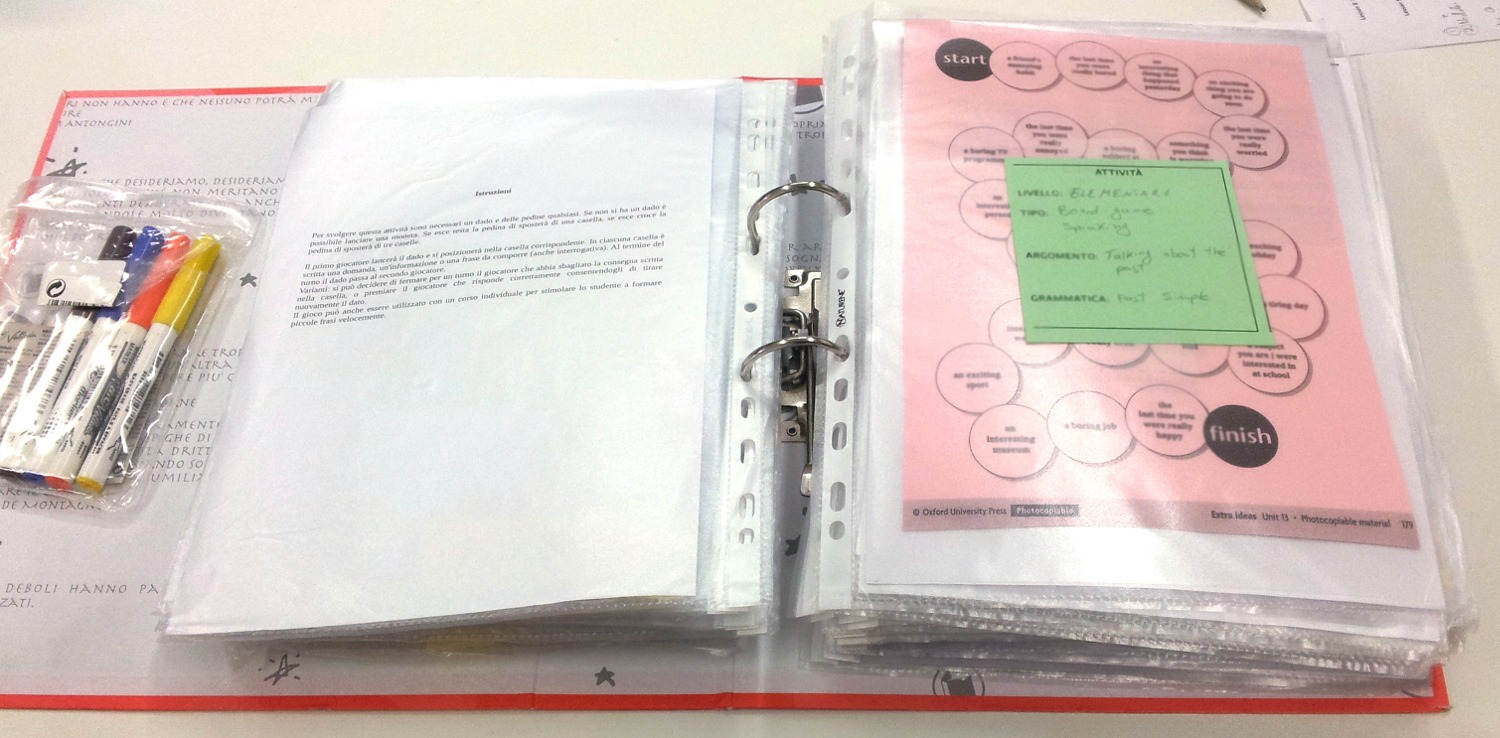I recently had the pleasure to read Marc’s blog post on a very interesting first-day-of-school activity book. Marc expressed both strengths and weaknesses on the book, which in turn created some discussion in the comment section. In particular, Chris suggested every teacher should create a personal collection of first day activities that work for them, rather than rely on such books.
Marc went on to add that this is not only good practice, but that it can actually constitute a form of CPD. From the discussion, I realised I already partially do what Chris proposed, so I thought I might share my experience here, in order to get feedback and ideas from you as well as try to do this more carefully and systematically in the future.
About a year ago I realised all the material I had was a big mess. Photocopies and handouts everywhere, the same cards photocopied many times, board games in different places so that I couldn’t really find them when I needed them. So I decided to buy a folder and organise it into sections (communicative, exam preparation, games…). See cover image
I also created a labelling system (which I was unable to keep consistently though as it requires lot of time) to remind myself of what level each activity might be most appropriate for, or what vocabulary or grammar point students are supposed to practice. I have to say this system has not proven to be necessary so far, as I know quite well all the activities I have collected. But I suppose it might become useful once I have collected a fair amount and I need to scan through them quickly to find one specific type, or when I’m in a hurry and need something to cover the last-minute lesson I was assigned 10 minutes ago.
Moreover, since I try to make my teaching as environmentally friendly as possible, I laminated most of the cards and board games I use most often, so that they don’t get worn out easily and I don’t need to keep replacing them with new ones, wasting time and paper in the process.
I would say that the advantages of this system are:
- it saves time when I need to find something;
- it saves paper and photocopies as I avoid photocopying the same cards over and over again, plus I can recycle unused photocopies from the previous lesson the next time I need the same material;
- I can count on a set of tried-and-tested activities that I know and feel confident managing, whose outcome I can predict quite accurately and that I know students will generally enjoy;
- it makes it easy to share ideas with colleagues;
- it helps me fine-tune each activity — by doing it with different groups and levels I find out what needs to be changed, improved or cut out in order to make the activity work best. I generally write down some comments for future reference. I suppose this is where the whole thing becomes a form of CPD.
I know I could do this on my computer and save even more paper — which I partially do. But as many activities involve handouts, cards or other props I still find the hard copy to be the most effective and quickest way to organise everything in a logical and easy-to-browse way.
How do you organise your teaching materials? I’m sure we all have a set of activities we go to when we are in a hurry or out of ideas, how do you keep track of these? Do you agree that it could be considered a form of CPD? Let me know in the comment section, as usual. 🙂

Thanks for linking me, Giulia. One other way of organising electronic resources in the cloud is by tagging them. I am in the process of doing this with my public Google Drive folder.
I love my laminator. Office power tools are great.